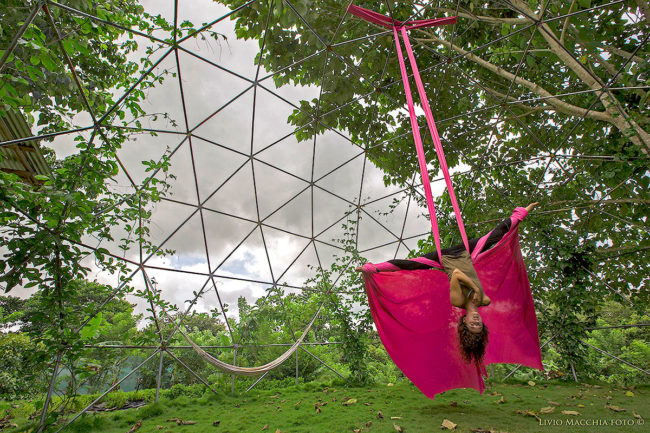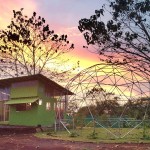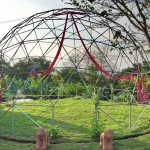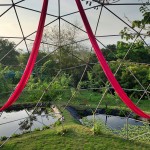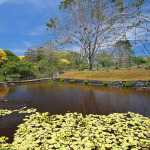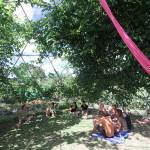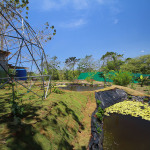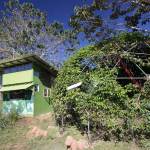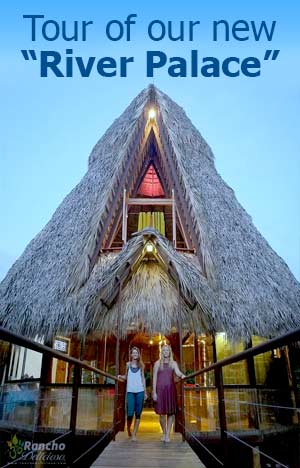Geodesic Dome
Now called the “Passion Dome” because it’s covered with passion fruit vines, originally we assembled my geodesic dome that I brought from the United States. It needed a lot of repair, and have improved it by adding one meter in height, making it taller give is more space at the bottom, since before, it didn’t have as much headroom around the edges. Now you can walk right up to the edge of it. The other option would have been to do a “5/8” dome, which would mean continuing the same geometry. That would have looked better but would be more complicated to get it to sit flat, so I chose the easy way.
The size is 30 feet, or 9 meters diameter, and with the addition of the extra bottom layer, it has a ceiling of around 18 feet, which works great for our aerial silk.
This dome was originally made by Jason Weade, and it was the first geodesic dome he ever made. After this, he went on to work for Pacific Domes, and since then, started his own company and now works for the amazing Obscura Digital as their dome specialist.
Currently we have an aerial silk hanging from the center, one double-hammock, and two hammock chairs. For a floor, we’ve installed “Japanese Magic Grass” which is very short and a bit prickly. It doesn’t require as much water as some other grasses, and doesn’t need to be mowed either.
We now use the space for yoga and other activities, and I was worried that it would be muddy all the time during rainy season, like the grass I put near my house. So I made sure it would drain well. I did this by doing a 1-2″ layer of sand, then a 1-2″ layer of high quality dirt, then 1-2″ of sand again. It also has three channels dug in it, filled with rocks and gravel. The idea was that water that falls on the grass would quickly go through the sand and then could pass through the channels out the side of the hill. The dirt is there to help the grass roots when they reach that level. So far, it’s working GREAT and is never soggy.
Around the dome we’ve planted passion fruit vines, which are rapidly growing up it and fruit continually. I’ve been worried that the structure may get too hot and damage the plants, because the metal really heats up in the sun. But, that’s never been a problem. These passion fruit vines are really tough.
Another challenge has been that the passion fruit vines grow so thick that they block all the sun, which is great for shade, but then the grass starts to die. So, we have to chop the ends of the passion fruit vines and pull them out occasionally, allowing more light to come in. This is also important because it stimulates the production of more passion fruit.
We have a type of caterpillar that loves to eat passionfruit vine leaves. We used to kill them all but now have been trying to let them munch on the leaves on the sunny side, to save us the trouble of so much pruning. Perhaps with a bit of luck, the caterpillars, passion fruit, and magic grass will find the right balance and maintain a harmonious existence where all three can thrive. That would be the essence of permaculture.
If you’d like to build your own dome, use this dome calculator to learn the lengths of the struts: www.domerama.com/calculators/3v-geodesic-dome-calculator/
- Geodesic dome and dorm accommodations.













